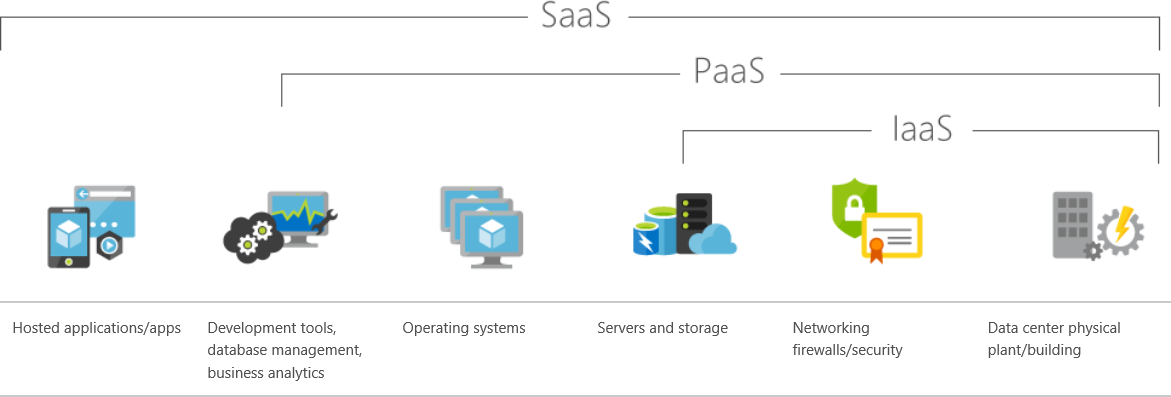

Adopting the Cloud doesn't have to be hard... Whatever your project, we can help! Call us on 0117 321 6480!
This blog post explains how Vantas Cloud can help your business migrate your on-premise infrastructure to Microsoft Azure Infrastructure-as-a-Service.

When looking at moving your infrastructure or building new infrastructure on Azure, it's important to first understand your network topology and how that translates to Infrastructure-as-a-Service (IaaS).
The key factors to think about are;
Is migrating to Microsoft Azure even right for you?
One of the biggest decisions with migrating your infrastructure to the Cloud is assessing whether or not doing so is right for your business and whether you're comfortable with the costs and ROI and how they differ to on-premise hardware environments.
Performing a gap analysis will help you determine what how you're utilising compute resource on-premise and you can then use that to determine what your base compute requirements are on Azure. For example, if you have a physical hardware server that is mostly under utilising it’s resources on-premise, when you migrate you could look at reducing the compute resource configuration so the server is better utilising the required resources and apply an appropriate scale strategy with a compute pattern that allows it to scale up or out as compute demand grows/contracts.
Microsoft Azure gives you a lot of the tools you'll need to mitigate some of the uncertainty before committing to any migration.
How do you plan a migration?
Once you have the necessary gap analysis and understand required compute resource configurations, availability and scale strategies and costings, you can look at creating a migration strategy and the cost impact of that migration strategy.
A migration strategy largely involves looking at your on-premise infrastructure topology and understanding how best to approach migration from an impact to business perspective. Your migration strategy should include a risk analysis of servers and their dependencies by complexity to migrate, this will help identify servers that may need more planning for migration than others. For example you might have a simple server running a service that might first appear to be a prime candidate for migration, but other servers depend on that server, you should calculate the impact of migrating it, such as bandwidth costs and ratency, the impact of this might give it a higher number in complexity despite being a simple server configuration, the key to migration is making decisions based on their perceived impact. This could even mean migrating multiple servers at once to mitigate the impact on dependencies and thus add to the risk and complexity.
Costing your migration strategy also allows you to plan and budget the migration so that you can mitigate the costs of provisioning and migrating infrastructure inline with your expectations, avoiding any surprise bills. You should plan for high bandwidth costs as you migrate which may not be typical for general operation post-migration. Azure has very powerful tools for analysing the operational costs on infrastructure you have migrated, so it may be sensible to adjust costings as you implement your migration strategy so you're making decisions on realistic costs.
When you’re ready to commit to planning the implementation of your migration strategy, you might first look to stage your new environment by setting up the required azure network topology and site-peering connectivity to your on-premise network so your on-premise and cloud infrastructure can communicate with each other, this might include setting up temporary traffic routing on your Azure network so you can route traffic on servers you’ve migrated across subnets.
Ready your toolbox
You should assess what tools & utilities you will need to support your migration. If you're migrating physical on-premise servers, you might want to look at disk imaging tools from Microsoft, like Disk2VHD which will convert your physical disk drives to VHD files that you can upload to Azure using Powershell. It's worth noting if you're planning on uploading on migrating the disks running Windows OS, you'll need to run sysprep before creating the disk image. We would advise migrating data disks and re-creating operating system disks and installing software from scratch on your Azure VMs and configuring accordingly, replacing data disks with your cloned data disks to complete the migration.
Microsoft provide a number of supporting documentation and utilities for How to Migrate to Microsoft Azure.

Martyn Norman
Cloud Consultant
Father, Husband, Bath Rugby fan, cloud consultant, software engineer and aspiring cloud technology evangelist with over 20 years experience in delivering enterprise solutions.
Send us a message and we'll get in touch to discuss your needs.